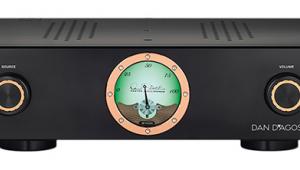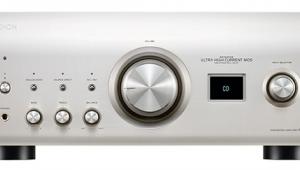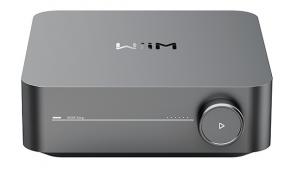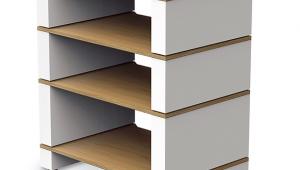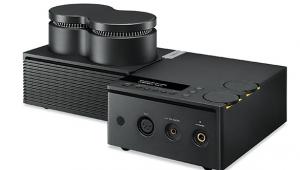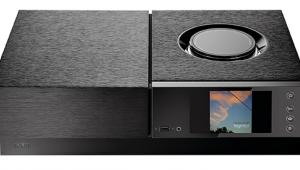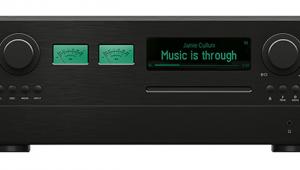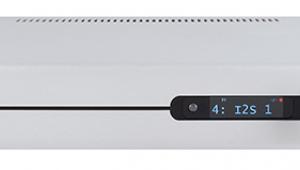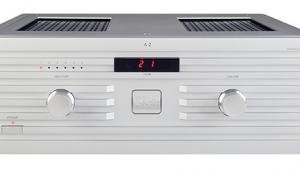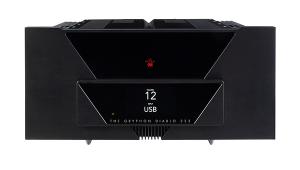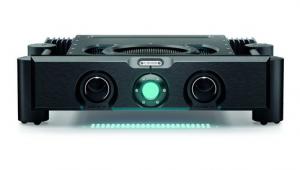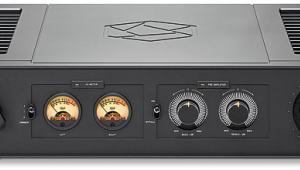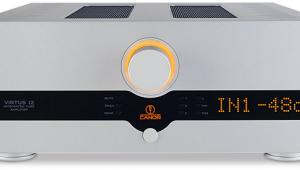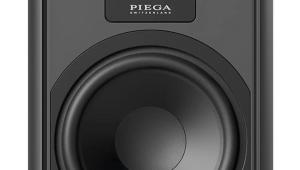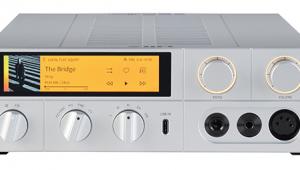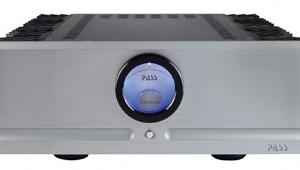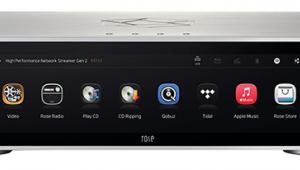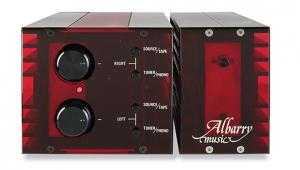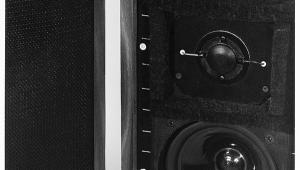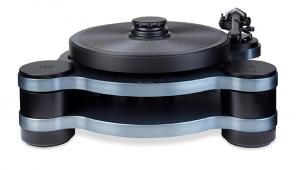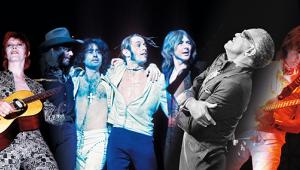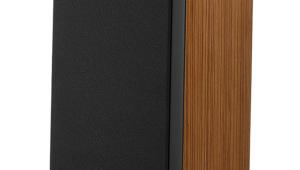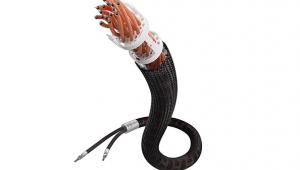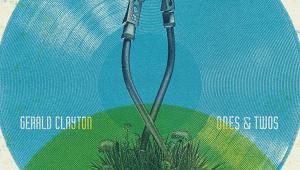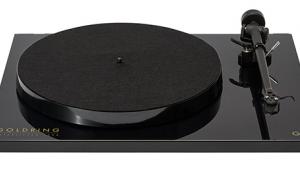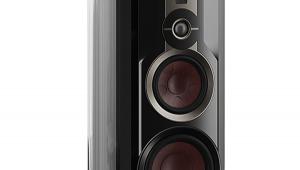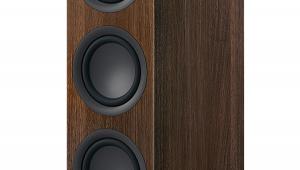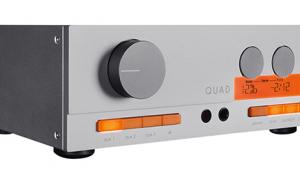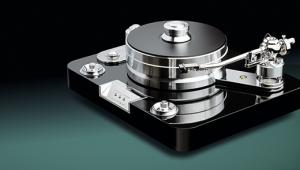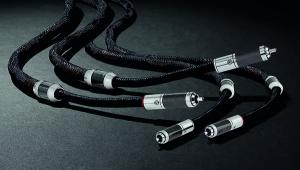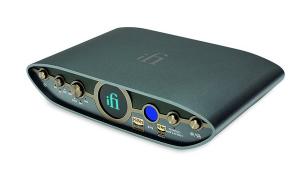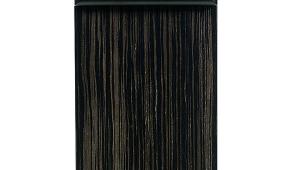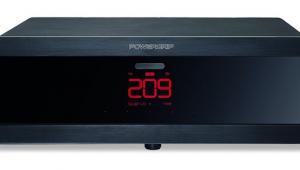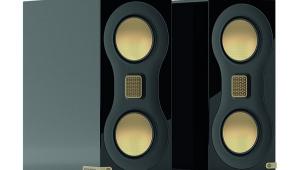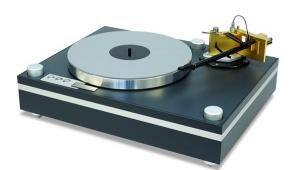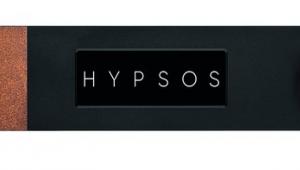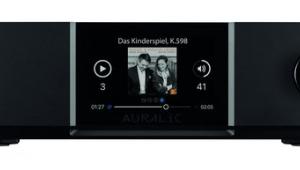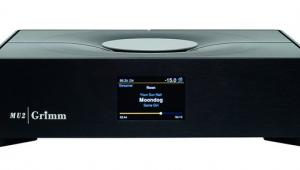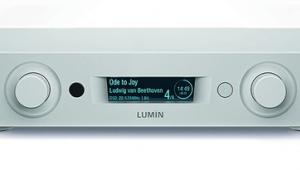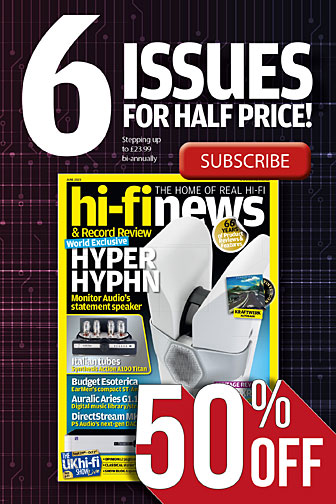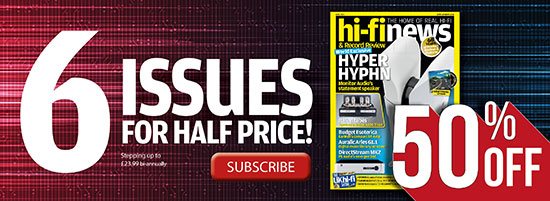Unison Research Triode 25 BE tube amplifier
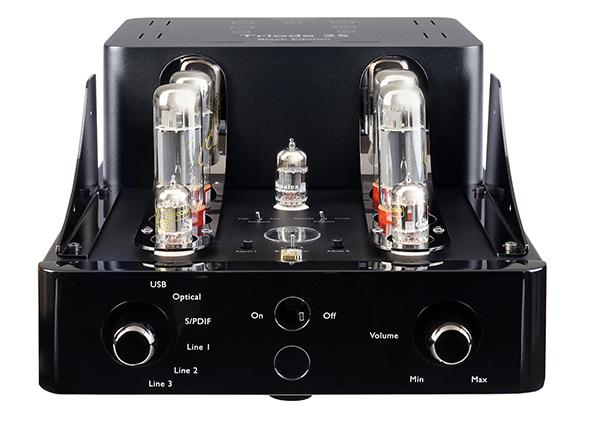

Hailing from Treviso in northeast Italy, Unison Research is a brand with an obvious love of tubes, to the point that you half expect to find a hot bottle or two incorporated in its Malibran and Max loudspeakers. Its CD players, the Unico CD Uno and Due [HFN May ’16], have tube-based output stages, while the solid-state amps in the same series have tube-based inputs. But the company is best known for its all-tube amplifiers, of which there are 15 spread across integrated, pre and power ranges.
The Triode 25 Black Edition integrated, selling for £3900 in just the one colourway, is an upgrade of the standard Triode 25 [HFN Jul ’15], which remains on sale for £3400. It’s also positioned above the entry-level Simply Italy (£2300) and Preludio (£3000) integrated models, but below a string of amplifiers ranging from the S6 at £4100 to the flagship Reference Pre/Power system (£51,500).
Black to the future
Established in 1987, Unison Research claims to be ‘the Italian leader in the production of tube amplifiers, and among the top ten in Europe’. Despite these lofty ambitions, it isn’t in the habit of continually refreshing its catalogue – its Reference preamp and monoblocks, for example, have been leading the line for over 15 years. And even this Black Edition (BE) of the Triode 25 outwardly appears very similar to the original, as do BE upgrades of its Simply Italy and S6 models.
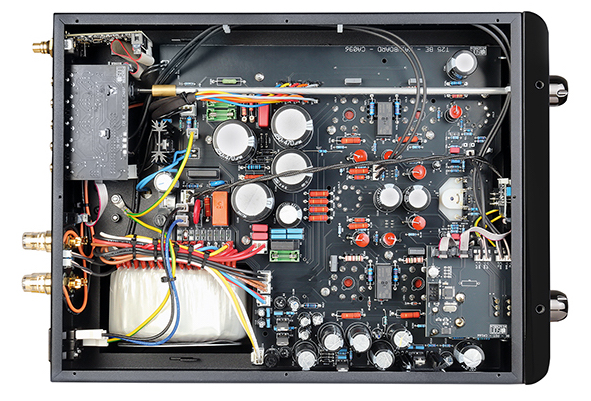
Are we just looking at a new paint job? This unit does indeed remove the silver trim of the standard version and gives the wooden fascia a piano black finish. The motorised volume and manual source controls are also now black, and Unison Research has taken the opportunity to tidy up some of the amp’s lettering and graphics. But, of course, this isn’t all: there’s an obvious change around the back, plus refinements under the hood.
More power, less distortion – this is what the Triode 25 BE promises thanks to revisions to layout and power management [see PM's Lab Report]. This includes the addition of ‘strategically placed’ polypropylene capacitors in the power supply, and a new input selection circuit. Moreover, the claimed output is now 2x50W in pentode mode or 2x30W in triode [see boxout] versus the 2x45W and 2x25W of the original (all re. 6ohm). Last but not least, the pairs of power tubes, operating in push-pull, are now KT77s, not EL34s.
As for the rear panel change, Unison Research’s BE models are ‘digital ready’ out of the box – the DAC module is otherwise offered as an upgrade path on its standard siblings. Tucked away on the righthand side of the Triode 25 BE’s connections are USB-B, optical and coaxial ports, feeding into an ESS ES9018K2M chip and supporting up to 384kHz LPCM and DSD256 over USB. Digital inputs are not especially common on tube integrateds, for a host of different reasons, so they make this particular model a little more ‘integrated’ than many others.
In the mode
Analogue connections are on unbalanced RCAs, with three line inputs and one line output complemented by an unfiltered stereo sub out that the manufacturer says ‘maintains the sound timbre of the amplifier’ into your partnering (active) subwoofer. Next to these is a single set of speaker binding posts – other Unison Research amps have multiple speaker output taps, but not this one.
The Triode 25 BE has a tidy footprint, being just 30cm wide, 45cm deep and 20cm high. A black metal grille protects its complement of tubes – the four power tubes, plus two ECC83s in the input/line stage and an ECC82 rectifier – and keeps curious fingers away from the heat and high voltages. This grille is held in place by cap screws, but you’ll want to leave these removed as there are controls on the amp’s top surface for switching between pentode and triode operation, and selecting between ‘High’ (12dB) and ‘Low’ (10dB) negative feedback modes. It’s also here where you can check and fine-tune the output tube bias, aided by a built-in meter.
If you subscribe to the notion, espoused in Jurassic Park, that anything that’s heavy is also expensive, then you might initially expect the Triode 25 BE to sell for more than £3900 – it’s surprisingly hefty, given its agreeable size, at 20kg. It also appears well put together, and is something of a pleasure to use, particularly the robust click of each turn of its source controller. A supplied system remote control is littered with buttons [see below], but only two – volume up and down – are relevant here.
![]() Bit of a steal
Bit of a steal
Considering this amplifier’s price and specification, it’s unlikely to be chosen to power large floorstanders in a large listening room. Yet, whether used with B&W’s 705 S3 Signatures [HFN Aug ’24], or ELAC’s more power-hungry VELA BS 403.2s [HFN Oct ’24], in a more typical 5mx3m space, the Triode 25 BE was not found wanting. Concerns about power are put to one side by a performance that packs a delicious punch, and while this is most notable in pentode mode, the triode operation doesn’t immediately strip it of its energy and excitement.
What’s also important, however, is that this amp’s robust delivery goes hand in hand with those sought-after tube amp qualities of warmth, richness and sense of musical ease. If you imagine a cross between Black Sabbath and Lynyrd Skynyrd, you’ll get close to Louisiana-based ‘sludge metal’ band Down, whose album NOLA [EastWest 7559-61830-2] combines pounding drums and slow, deep riffs with tinges of blues and a ‘Southern’ guitar sound. Unison Research’s amp coped with it brilliantly, standout track ‘Lifer’ slamming from the B&W speakers with both an aggressive attitude and lush, warm textures.
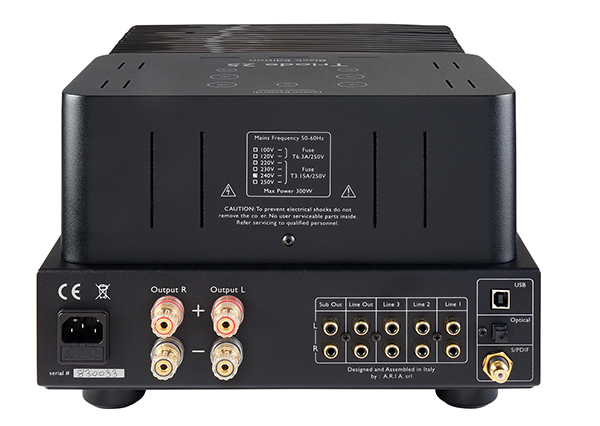
It pulled off the same trick with Iron Maiden’s ‘Wasted Years’ [Somewhere In Time; EMI CDP 7463412], a track that can sound a bit thin due to its glassy production. The Triode 25 BE applied its own finish, while still leaping into the drumming and basslines. By the end of Adrian Smith’s famous guitar solo, I was grinning from ear to ear and beginning to consider the amp’s price a bit of a steal.
Rock and refine
This Triode 25 BE can, for want of a better word, rock, but is even more accomplished at luring you into music of a softer, more refined nature. That feeling of easy communication, of no sense of strain, was apparent from the very start of ‘Moins De Troi’, performed by French vocalist Élodie Frégé and the London Session Orchestra [Élodie Frégé; Mercury 983 695-3]. Long string notes had a silky, smooth quality, Frégé’s voice was delivered with breathiness and texture, and the bassline that flits in and out was plump and deep.
As for the amp’s ‘sound seasoning’ tools, my default setting was pentode – call me a hooligan, but I enjoyed the extra amount of bass drive and slam. Triode operation, however, is arguably a little more balanced and natural, and a better fit for some material. The layered choral harmonies of the Cappella Nova ensemble, performing James Macmillan’s ‘Strathclyde Motets’ [Who Are These Angels?, Linn Records; 192kHz/24-bit], had a hint of fizziness around the edges in pentode mode. Switching to triode, which can be done on the fly, brought welcome extra smoothness.
Hot dog
Equally, running the Triode 25 BE in the mode it’s named after (and with the more open-sounding low feedback option), made it that little bit easier to inspect the fine touch of the Budapest Festival Orchestra, playing Mahler’s Symphony No. 1 under Ivan Fischer [Channel Classics 192kHz/24-bit]. This piece, with its light/dark dynamics and full array of instruments, at first enjoyed delicacy, space and an involving, deep soundstage, before percussion and brass crescendos revealed that there’s sufficient power on tap.
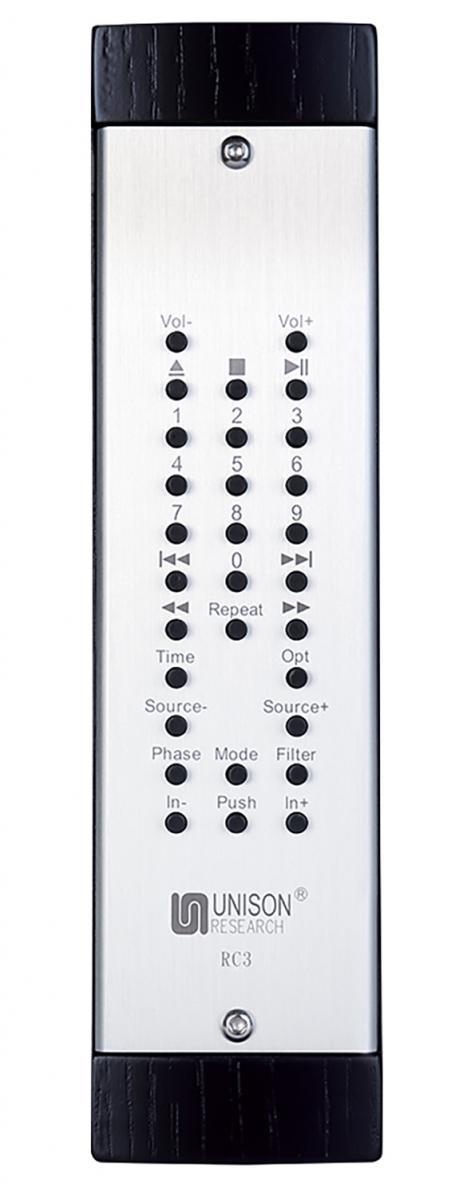
Replacing a Hegel Viking CD player [HFN Sep ’23] and Primare PRE35 streamer/DAC [HFN Dec ’19] with a Mac/Roon set-up, and making use of the amp’s own D/A stage, the performance stayed impressive. A cover of Led Zeppelin’s ‘Black Dog’, featuring cellist Troy Everett and guitarist/singer Carmen Vandenberg [Sunset Sound download], maintained the smooth, musical sound, and confidently portrayed the sustained string notes and weight of the piano. More ‘upmarket’ digital stages can extract greater amounts of fine detail, but this ESS-based DAC stage should please anyone.
Moreover, such is the Triode 25 BE’s performance, you can leave your music library playing at random, through analogue or digital inputs, and not hear anything disagreeable. Ed Rush and Optical’s ‘City 17’ [Travel The Galaxy; Virus Recordings VRS007] sounded effortless in the bass, this club-friendly track pushing forward, before The Doors’ ‘Soul Kitchen’ [The Doors 50th Anniversary Ed., Rhino/Elektra; 192kHz/24-bit], with its insouciant keyboard intro, seeped into the room, the sound as sweet as honey. And these are just two tracks from a list of many in my notes – I could listen to this amp for hours.
Hi-Fi News Verdict
A little cracker of an integrated amplifier, this Black Edition refresh of Unison Research’s Triode 25 outperforms its size and price with a captivating, moreish – and, yes, tube-like – sound. The USB DAC is a useful addition, and the choice between pentode and triode modes serves both system matching and personal taste. Add in the compact style, generous connectivity and ease of use, and you’re onto a winner.
Sound Quality: 87%
